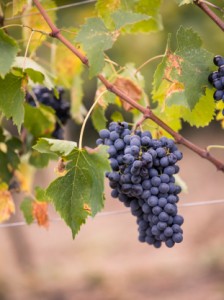By Michael Green –
 Repeat this mantra: “All wine need not be great. All wine need not be celestial.” Believe it. Own it. Don’t forget to breathe. Now sip!
Repeat this mantra: “All wine need not be great. All wine need not be celestial.” Believe it. Own it. Don’t forget to breathe. Now sip!
In this information age and urban environment, in which most of us live, we are besieged with wine criticism and reviews that often proclaim the best wines…..the greatest wines….the “you must beg borrow and steal to get a bottle of this limited wine.” A critique might contain the words “jam packed tannin staining fruit with surreal amounts of extract.” Often following the review is a score that usually rates the wine from 1 – 100 points.
I find a lot of so-called wine criticism bloated. And the idea of numerical ratings is absurd. What does a 96-point wine really mean and how helpful is it to you. Imagine if we rated art numerically. “I give the Venus de Milo 75 points, with points deducted for each missing arm.” Or the next time you are ready to order some fish at “restaurant tres cher”, the waiter recommends his 99 point salmon in a buerre blanc sauce.
 Before you think me a vinous heathen, let me say that I love wine. And I’ve happily spent my career drinking well-made wines. But my object is not to have every wine that I enjoy be so exalted that I must drink it on my knees!
Before you think me a vinous heathen, let me say that I love wine. And I’ve happily spent my career drinking well-made wines. But my object is not to have every wine that I enjoy be so exalted that I must drink it on my knees!
Some of the most fulfilling wine experiences have been when I put wine in context. By that I mean occasion, season, cuisine and place. Let me recount a recent story.
Last year I was in Tuscany, teaching and learning at a Toscana Saporita, a cooking school in the western part of the region. The school is situated on a working 15th century agricultural estate. Mornings were spent participating in hands-on cooking classes. Our lunch featured the foods prepared during the morning lessons.
My job was to lend support to the wine portion of the program. Wines were served with all meals. While I could wax poetic about the classic, often great wines of Tuscany such as Chianti, Brunello di Montalcino, and the spectacular super-Tuscans, many of our meals featured local Tuscan wines that I had never heard of. Montecarlo. Have you heard of it? Sounds like the place where you choose to double down or take a try at roulette. In fact, it is a lesser-known region located just east of Lucca. The reds of this region are Sangiovese-based wines, the major grape that is used to produce the wines of Chianti.
 We enjoyed many of these wines with both our lunches and dinners. Were these wines great? No. Well-made? Generally yes. Will I remember them? Absolutely. You cannot disconnect a wine from its context. Surrounded by 70 acres of olive groves and vines, eating authentic food made from sublime simple ingredients (a pristine grilled artichoke followed by some freshly made pasta sent chills up my spine). These local wines connected all the dots. Enjoying a meal in a leisurely setting, simple and direct local food and wine accompanied by lively conversation. These are experiences that will forever be part of my palate memory.
We enjoyed many of these wines with both our lunches and dinners. Were these wines great? No. Well-made? Generally yes. Will I remember them? Absolutely. You cannot disconnect a wine from its context. Surrounded by 70 acres of olive groves and vines, eating authentic food made from sublime simple ingredients (a pristine grilled artichoke followed by some freshly made pasta sent chills up my spine). These local wines connected all the dots. Enjoying a meal in a leisurely setting, simple and direct local food and wine accompanied by lively conversation. These are experiences that will forever be part of my palate memory.
Similar experiences can also be found closer to home – sipping a Gewürztraminer in the glorious countryside of Little Compton, Rhode Island or sampling the varied wines of the North Fork of Long Island on an Indian Summer day. You get the picture.
Wine cannot be removed from the context in which we enjoy it. And if you like the wine, beyond what other people think, that’s most important because it’s your personal experience, unlike anyone else’s. A noted wine journalist once observed, “Wine should be treated more like a potato and less like a Picasso.” I raise my glass and say “here, here!”
F&M
